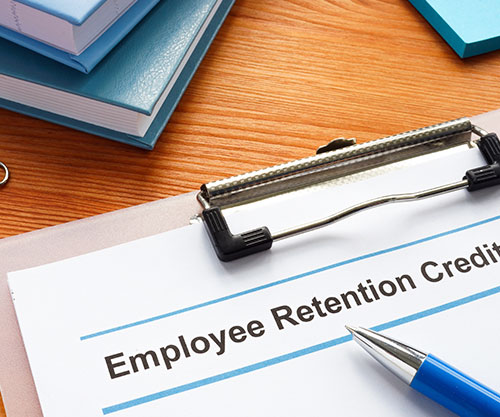 What to Know About the Employee Retention Credit
What to Know About the Employee Retention Credit
If you’re a small business owner, you may be eligible for a tax credit called the employee retention credit (ERC). This refundable tax credit benefits businesses that kept employees on the payroll during the COVID-19 pandemic.
Many small business owners are just now hearing about the program. Further, the rules have changed over time. As such, small businesses that were initially ineligible, may now be eligible.
Luckily, eligible small businesses can still claim the ERC if they haven’t already. But the rules surrounding the ERC can get complicated.
Below, we’ll walk through what the ERC is and help you determine your eligibility for the credit.
What Is the Employee Retention Credit (ERC)?
The ERC is a refundable tax credit first established in 2020 under the Coronavirus Aid, Relief, and Economic Security Act (CARES Act). The credit was created to help businesses keep employees on their payroll during the COVID-19 pandemic.
Since then, the credit has gone through a number of changes, including expanded eligibility; it’s now also available to employers who obtained loans under the Paycheck Protection Program (PPP). Businesses can claim the ERC for wages paid to employees between March 13, 2020 and Sept. 30, 2021, depending on eligibility.
How much could you stand to receive from the ERC? The amount depends on when you’re eligible to file a claim.
For the 2020 tax year, eligible businesses can receive credit on 50% of qualified wages—up to a maximum of $5,000 per employee—for the period from March 13, 2020 to Dec. 31, 2020. For 2021, the ERC is calculated as 70% of qualified wages, up to a maximum of $7,000 per employee per quarter, for a maximum of $21,000 per employee.
Determining Your ERC Eligibility
There are different requirements for claiming the ERC in 2020 versus 2021, so you’ll need to determine eligibility for each year.
2020 eligibility
You are eligible for the ERC in 2020 if:
- Your business faced full or partial suspension or limitation of operations of more than a nominal portion of your business during any calendar quarter because of governmental orders; or
- Your business saw a 50% decline in its gross receipts in Q2, Q3, or Q4 of 2020 as compared to gross receipts in the same calendar quarter in 2019.
2021 eligibility
You are eligible for the ERC in 2021 if:
- Your business faced full or partial suspension or limitation of operations of more than a nominal portion of your business during any calendar quarter because of governmental orders; or
- Your business saw a 20% decline in its gross receipts in Q1, Q2, or Q3 of 2021 as compared to gross receipts in the same calendar quarter in 2019
When assessing your eligibility, it can be more straightforward to qualify under the gross receipts test, which uses objective evidence. When qualifying under the full or partial suspension test, your eligibility depends on subjective elements that could be challenged by the IRS.
Another advantage of the gross receipts method is that you’ll also automatically qualify for the ERC in the following quarter. If you qualify under the full or partial suspension test, you will only be eligible for the period of time your business was affected by a government order.
 ERC for Recovery Startup Businesses
ERC for Recovery Startup Businesses
Recovery startup businesses have extended eligibility for the ERC into Q3 and Q4 of 2021. A recovery startup business is one that:
- Went into business after February 15, 2020.
- Has an average annual gross receipt of less than $1 million.
- Does not meet either the full or partial suspension test or the gross receipts test for the quarter in question.
The maximum ERC for recovery startup businesses is $50,000 for each of Q3 and Q4 in 2021.
Calculating Your Qualified Wages
Your ERC entitlement is calculated based on “qualified wages.” Qualified wages are any employee wages you’ve paid that were subject to Social Security and Medicare withholding taxes, plus any health plan expenses that are allocable to those wages.
However, there are some wages that don’t qualify. That includes any wages used to obtain PPP loan forgiveness, or credits or relief received under the Families First Coronavirus Response Act (FFCRA), the American Rescue Plan Act of 2021, and the Work Opportunity Tax Credit (WOTC).
Wages paid to individuals who own more than 50% of the business and to those who are related to the employer, including the employer’s spouse, also don’t qualify.
How to Claim Your ERC
If you are eligible for the ERC, you will need to file Form 941-X to adjust your initial filing of Form 941 (Employer’s Quarterly Federal Tax Return). You have up to three years after the date you initially filed Form 941 to file a Form 941-X adjustment.
Not sure if your business is eligible to claim the ERC? Speak with your Lohman Company ERC experts who will be able to guide you through the process.
